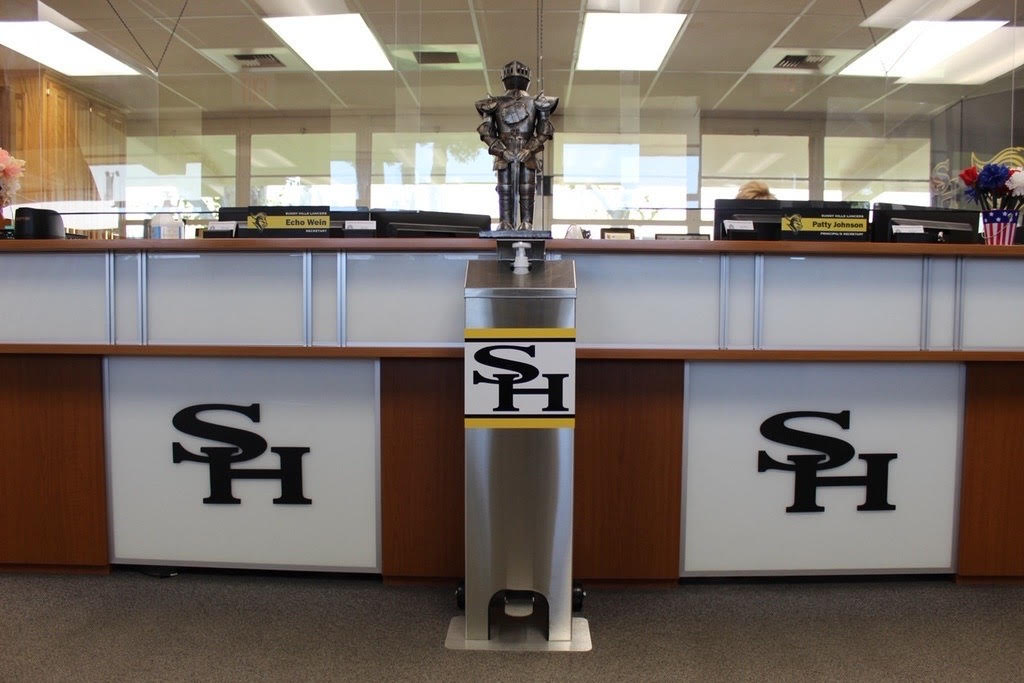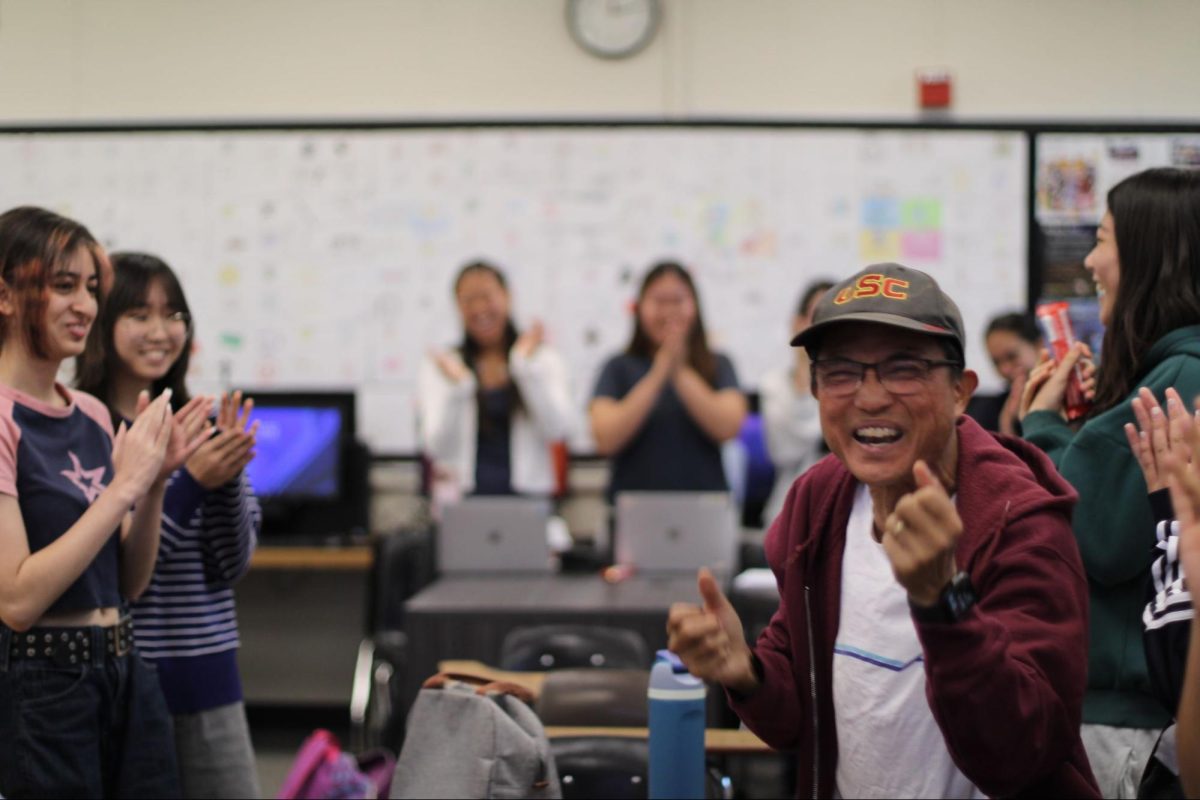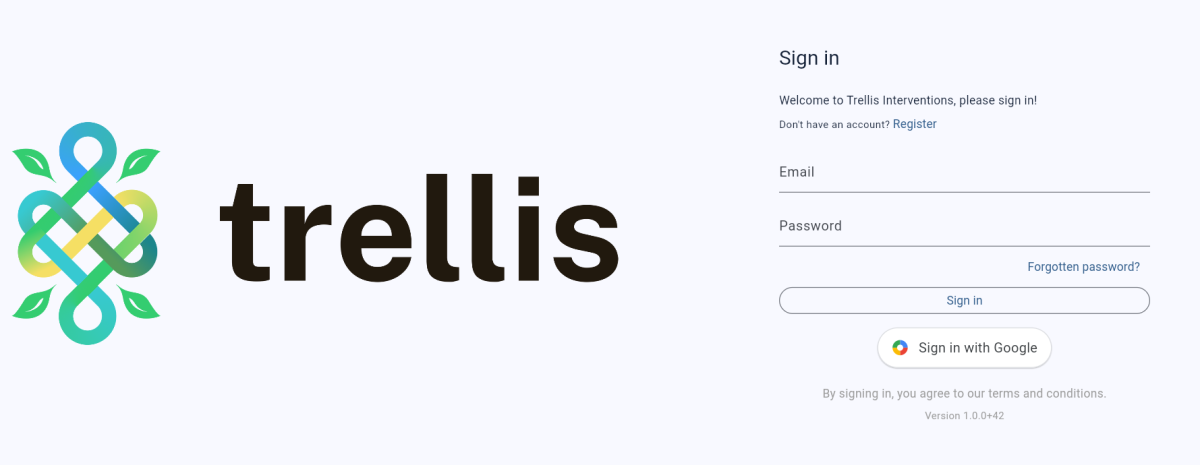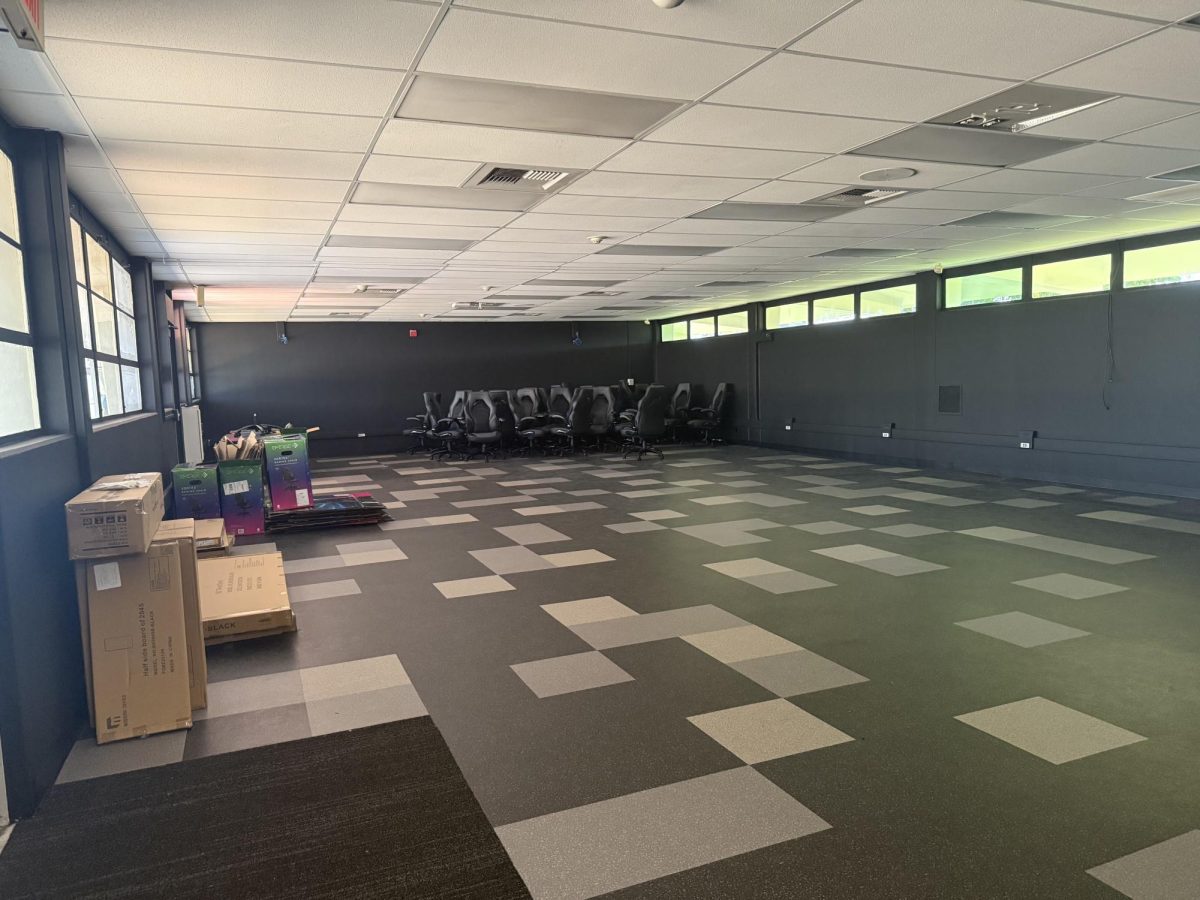This is the second of a series of stories dealing with the scheduled Nov. 2 reopening of Sunny Hills High School and what COVID-19-related safety and health measures the Fullerton Joint Union High School District [FJUHSD] has approved for teachers and students when the hybrid learning model replaces the current distance learning situation.
Sunny Hills will be more like Safety Hills when the campus reopens for live classroom instruction Nov 2.
Upon receiving their color-coded bands to gain entry to the campus, students will notice several COVID-19-related safety signs plastered throughout hallways and walls with messages such as, “Face Coverings Required,” “Our Lancers Practice Social Distancing” and “Clean Hands Keep You Healthy.”
“The site team and I met multiple times over the summer reviewing state safety guidelines, and after much review and practice, we are well-prepared,” principal Allen Whitten said. “I believe all the protocols we have are stricter and safer than [those of] other schools, and we’re going to be in a pretty good spot when we do return.”
Anyone needing to use the restroom or get water from a drinking fountain will also see some new restrictions.
The “SHHS Opening and Safety Plan,” available for students and parents on the SH website, lists restroom usage protocols such as propping open main restroom doors, limiting student capacity to meet social distancing guidelines and having one entrance and exit for students.
Visible floor markers have been placed six feet apart outside restrooms to remind students to socially distance themselves while waiting in line.
“With only 700 students being on campus a day, we have lots of restrooms, and I don’t think full restrooms will really be a problem we [will] run into,” Whitten said. “It’ll be a piece of cake.”
Before hybrid learning begins, the school will shut down all water fountains and require students to bring their own reusable water bottles to refill at any of the five bottle filling stations spread throughout campus, Whitten said.
Although vending machines will also be unavailable for students to purchase bottled water and snacks, the cafeteria will be serving free “grab-and-go” meals to all students who want them at break and lunchtime.
“We have a waiver from the federal government to provide free breakfast and lunch to all students,” Whitten said. “It includes a fruit, vegetable, milk and an entree.”
Throughout this week until Oct. 29, the Parent, Teacher, Student Association will be renting lockers out to students online, accessible through the Sunny Hills website.
“Instead of selling all of the lockers, they will be sold with five lockers in between them,” Whitten said. “When we return, students just need to be responsible and make sure they are not standing too close to anyone else’s locker.”
And to preserve a tradition that Whitten started when he first became principal of Sunny Hills, speakers around campus will still broadcast music near the end of each passing period to alert students that the tardy bell will ring.
Here are some other questions and answers for students who have signed up to return for hybrid learning next week:
WHAT WILL THE CLASSROOMS LOOK LIKE UPON RETURN?
As for the classroom interiors, all non-essential furniture, including extra desks and file cabinets, have been removed to increase the usable space for student desks, which have been arranged at least six feet apart, Whitten said.
Instead of a classroom of 40 student desks, the average number of seats available per classroom has been shrunk down to roughly five to eight student desks.
In preparation for reopening, teachers have been supplied with safety equipment to use for their own classes such as a handheld touch-free thermometer and plastic partitions to put on the desks for larger classes, Whitten said.
“Each classroom has been supplied with one touch-free sanitizing unit for students to step on and dispense as they leave the classroom,” Whitten said. “Teachers will periodically remind students to grab some on their way out, and it’ll easily become a habit for students.”
The school purchased the touch-free sanitizing units in bulk, each one costing an estimate of $20 each. Custodians will be refilling these individual units as needed, the principal said.
The school has increased the number of daytime custodians to five — two brought in from the night shift — and they will be cleaning such high contact surface areas as door handles, handrails, counter tops and sinks.
Additionally, Whitten said he intends to have the teachers decide for themselves how they will go about sanitizing student desks and chairs in their classrooms in between each period.
A bottle of disinfectant has been placed in each classroom for teachers to either have students wipe down their own desks or for teachers to routinely assign one student to help with the cleaning.
WHAT ELSE HAS THE SCHOOL ADDED ON CAMPUS TO PROMOTE HEALTH AND SAFETY FOR RETURNING STUDENTS?
Directional arrows have been placed all around campus to prevent crowding in the hallways during passing periods.
To draw these arrows, the school utilized the same paint used to paint lines on the athletic fields, making it a very cost efficient technique, Whitten said.
The arrows drawn throughout the wings direct all students walking away from the center of the campus to walk near the classroom doors and students walking in the opposite direction to walk in the middle of the wings.
In addition to the wings, floor markings have been placed along the hallways to encourage students to walk in the opposite direction to keep a safe distance from each other.
For the campus’ only two-story building, each of the three staircases leading up to the 180s classrooms have been designated for entrance and exit to prevent collision between students heading up the stairs and students heading down, the principal said..
“Everybody’s arrival to class is a bit staggered, so one staircase should be enough to get everyone upstairs,” Whitten said. “But because students all want to leave at the same time once class is over, we’ve opened up the other two staircases for students to exit quicker.”
Teachers and administrators expect students in Cohort A/B to abide by all social distancing guidelines and will strictly warn students who fail to follow the directional arrows, stay six feet apart or wear their masks and wrist bands during class hours.
“It’s going to require everybody to step up their game as they return to school,” Whitten said. “And all of us administrators, campus supervisors, teachers and staff on campus have to make sure we give out reminders so that people know that campus life is different now.”
Be sure to check back to The Accolade’s online news website for the last part of the series in which we focus on teacher and student reactions to the school’s health and safety plan.






